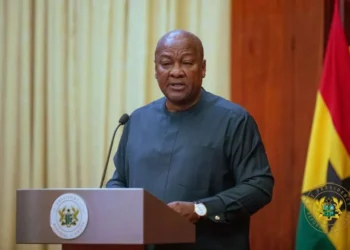The World Bank has unlocked Ghana’s missing link for growth that creates jobs for the demographic dividend, through its “Country Growth and Jobs Report,” to meet the main challenge of the economy.
The report, which the World Bank describes as a “diagnostic tool,” was launched early this year to set job creation as the pivot of country-specific analyses and recommendations to enhance governments’ growth initiatives.
Job creation is at the core of the challenges the Ghanaian economy faces and a pillar in the Mahama-led administration’s election. The World Bank sets the stage to reveal the tools that can drive employment and job quality.
According to the World Bank, 1.2 billion young males and females in developing countries, including Ghana, will attain the working age between now and 2035 under the current demographic path. Out of the 1.2 billion, just a small section is expected to gain meaningful employment, while millions will neither be employed nor be in school.
Meeting the Needs of Young People
Jobs are the solution to the problem of the youth in developing countries. The demographic structure of developing countries, especially African countries, reveals a youthful population. Year on year, the number of young men and women who cannot find jobs is growing. The ambitions and drive of this young group dissipate with the passing of time.

Some level of control is needed in this situation to truncate the growing distress in the lives of the young population in Ghana. According to the World Bank, Ghana needs accurate data and its precise interpretation to inform policies that meet youthful needs.
“To leverage the demographic dividend of young nations and meet the aspirations of their youth, countries must unlock economic growth that creates more jobs. And to achieve that, countries need high-quality data and analysis that can inform more effective policies.”
World Bank
The Country Growth and Jobs Report put “jobs [creation] at the center of country-specific analyses and recommendations that can be used by governments to identify constraints not only to faster growth but also—and more importantly—pinpoint what can drive employment and quality of jobs.”
Ghana’s Demographics
According to the Ghana Statistical Service (GSS), 57 percent of the population is under the age of 25 years. Approximately, by age 22, all things being equal, one must have completed the university (first degree). Those who end at Senior High School complete at age 18. Therefore, between the ages of 18 and 25 years will be actively seeking employment opportunities. Extending it to say 35 years adds to the numbers. A deliberate plan is needed to contain the growing numbers.

The population grows at a 2.18 percent rate, according to 2016 estimates. GSS data further shows that though fertility declined significantly during the 1980s and 1990s. For the past few years, fertility has been fairly estimated at around 4 children per woman. According to 2016 estimates, the birth rate in Ghana is around 30.8 births/1000 population.
This picture heightens the urgency needed for the country to put in place a long-term sustaining program to provide for the growing young men and women.
Unlocking Growth: Learning From the Philippines
The Country Growth and Job Report’s first edition was for the Philippines. According to the World Bank, its economy grew fast, but productivity gains are limited. Job creation, since 2010, has been high, but 75 percent of the jobs are not in the productive sectors. As a result, their export declined. Their growth is inclusive, as low-middle-income regions led the growth. The country also achieved macroeconomic stability and fiscal sustainability and withstood shocks.
The business dynamism of the Philippines is dented by regulatory complexity. The large firms are not expanding, and technology adoption is also challenged by skills scarcity and a lack of incentives.
The World Bank’s reform agenda for the Philippines stood on three masts: foundational investments in infrastructure and human capital; a more competitive and enabling business environment; and mobilizing private capital at scale.

For Ghana, while the country waits for its specific Country Growth and Job Report, a lot can be learnt from the roadmap, especially since the Ghanaian economy has certain similarities with the Philippines. The Ghanaian economy is fast-growing within a short period, most wage-significant jobs are not in the productive sectors, and there are macroeconomic stability and fiscal sustainability. These lay a bridge on which Ghana can learn from its roadmap to increase job creation.
The three key masts on which their reform rests can also re-engineer Ghana’s growth path. Ghana should increase public infrastructure investment: transport, logistics, and digital. Ghana should also sharpen its human capital: early childhood nutrition, education quality, job-relevant skills, and digital and emotional competencies. The local government capacity needs should be strengthened.
Again, Ghana should streamline business regulations, reduce policy uncertainty, strengthen competition policy, and address barriers to firm entry, scaling, and exit. The public-private partnership frameworks and investment planning need to be strengthened. Firms also need to be supported, both new and small, to compete globally. Ghana should also take AI seriously to grow ecosystem innovation, as well as research and development.
The consequence of the growing joblessness in Ghana must be tackled intentionally to give a future to the country.
READ ALSO: Ghana’s Gold Reserves Surge to 38.04 Tonnes in October 2025























